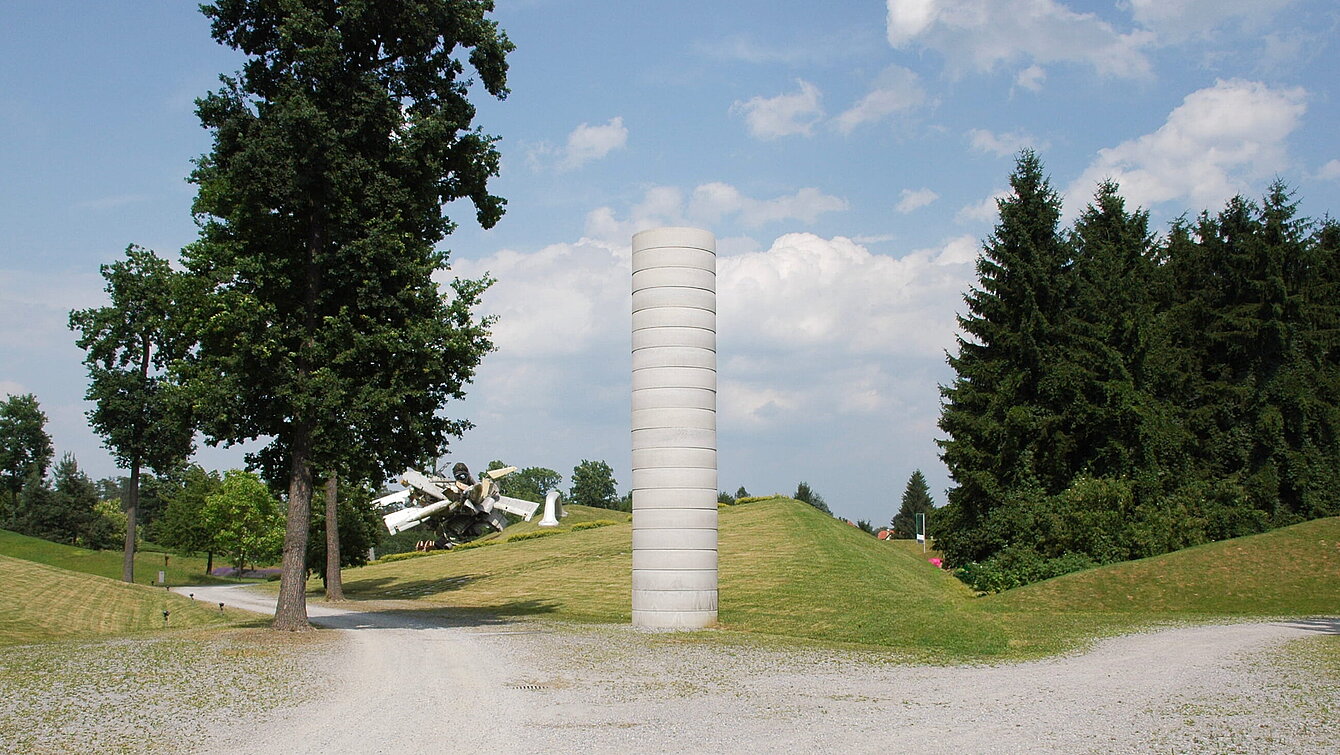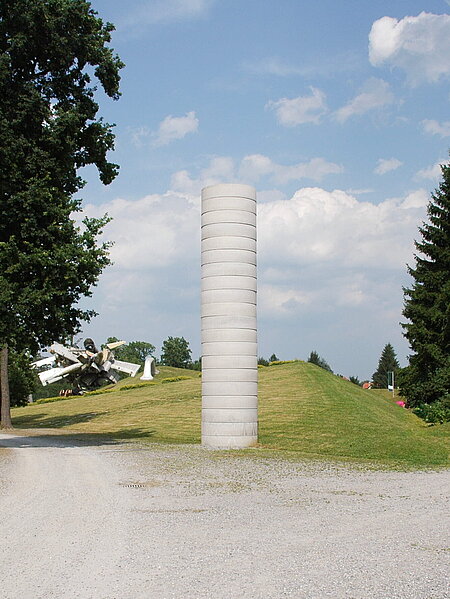For this work, Zobernig uses prefabricated concrete blocks, a very common but generally invisible object in the context of everyday life. In doing so, he avoids any kind of personal artistic signature. He stacks these construction rings on top of each other, creating a huge column. The sculpture deliberately does not involve an elaborate or beautiful design. This focuses our attention on the material itself and allows a sober view of the world. In this way, the artist also explores the question of where and how the boundaries are to be drawn between art objects and everyday objects.
Untitled
Heimo Zobernig, 2003


Image Credits
Author
Elisabeth Fiedler
Location on map
Position 48
Owner
Österreichischer Skulpturenpark Privatstiftung
Artist biography
Heimo Zobernig
Show all
About the sculpture
Epistemic reflections started by Wittgenstein, the Wiener Kreis and the Wiener Gruppe, dealing with the question of what language can do and what could be stated about the world, are combined by Zobernig with equivalent questions about art.
Being aware of the impossibility of an objective answer, he subjects his concepts to strictly reduced forms, structures and systems of order, which are created in consideration of the relationship between man and his environment. Using cheap or prefab material used as a clear statement against the preciousness of the medium, he is interested in the condition of the “orders created”, which he analyses, assesses and questions.
Zobernig places industrially fabricated concrete rings on top of each other, thereby creating a cylindrical column looming into the sky. In this way, he reminds us of Brậncuşi’s “Endless Column” and of Walther de Maria’s “Vertical Earth Kilometre”, adapts Minimal Art and refers to the appropriateness and simplicity of concrete as a material, as was demanded by Le Corbusier.
Zobernig is interested in areas in which objects of art can still just about be defined and accepted as art. Without charging it with pathos, he reduces the design of the sculpture as much as possible, in order to have the material itself develop the content. In this, the audience will be able to read scales via his body measures, but also by means of the constructed landscape surrounding the sculpture.
Without a given contents or reference to an artificial signature, set pieces of a modernist vocabulary of forms are used to ensure a claim for original invention is avoided, and to enable a prosaic view onto the world without transcendence.


















